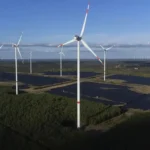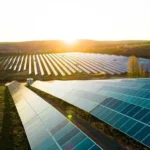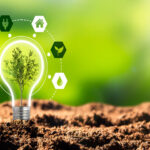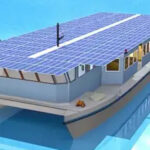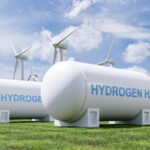What Are the 4 Types of Hydropower? A Complete Guide
Introduction
Hydropower is one of the oldest and most reliable forms of renewable energy, converting the kinetic energy of flowing or falling water into electricity. It accounts for a significant portion of the world’s clean energy generation and continues to evolve with technological advancements. With rising global concerns over fossil fuels and climate change, hydropower presents a sustainable solution that aligns with both environmental goals and growing energy demands.
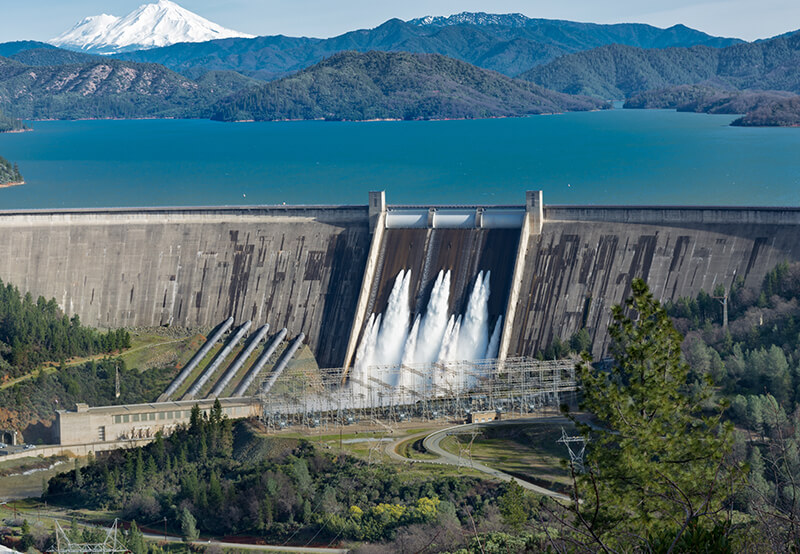
This guide explores the classification of hydropower into four main categories: impoundment, run of river hydropower, pumped storage hydropower, and offshore or emerging technologies. Understanding these types of hydropower plants will help clarify how hydropower works and its varied applications in today’s energy landscape.
Impoundment Hydropower
Impoundment hydropower is the most common and widely recognized type. It involves the use of a dam to store river water in a reservoir. When released, the stored water flows through turbines, generating electricity. This method provides a steady, controllable supply of energy, making it a dependable base-load source for national grids.
How does hydropower work in this system? The water held in the reservoir possesses potential energy due to its elevation. As it flows down through the dam, this energy transforms into kinetic energy, spinning turbines connected to generators that produce electricity.
Real-World Example
The Hoover Dam in the USA is a classic example of impoundment hydropower. It has a capacity of over 2,000 megawatts and supports electricity needs across multiple states.
Advantages
- Reliable and controllable energy output
- Enables water storage for irrigation and recreation
- Helps in flood control
Limitations
- High environmental impact due to flooding of large areas
- Significant upfront construction costs
- Displacement of wildlife and communities
Among the various types of hydropower plants, impoundment systems are the most infrastructure-intensive but also the most reliable for large-scale power generation.
Diversion (Run-of-River) Hydropower
Diversion, or run of river hydropower, channels a portion of a river through a canal or penstock without the need for a large reservoir. The water flows through turbines and is then returned to the river downstream. Because there’s minimal storage, electricity generation varies with the river’s natural flow.
So, how does hydropower work in this type? The water’s movement itself provides the kinetic force needed to spin turbines. The system usually includes a small intake weir to divert the flow and ensure enough pressure.
Real-World Example
The Chief Joseph Dam in Washington State, USA, operates primarily as a run-of-river facility, producing more than 2,600 megawatts with low water storage.
Advantages
- Minimal environmental disruption
- Lower construction costs compared to dams
- Maintains river’s natural flow and ecosystem
Limitations
- Seasonal variation impacts energy output
- Limited capacity to store or manage water
- Not suitable for areas with unpredictable water flow
When analyzing the classification of hydropower, run of river hydropower is ideal for regions with consistent water flows and ecological sensitivity.
Pumped Storage Hydropower
Pumped storage hydropower acts like a giant battery. It stores energy by moving water between two reservoirs at different elevations. During periods of low electricity demand, excess energy is used to pump water from the lower to the upper reservoir. When demand spikes, the water is released back down to generate electricity.
To understand how does hydropower work in this context, think of it as a reversible system: energy is stored by lifting water and recovered when the water flows back down through turbines.
Real-World Example
The Dinorwig Power Station in Wales is a key pumped storage hydropower facility. It can go from standby to full power in just 16 seconds, making it ideal for balancing grid loads.
Advantages
- Excellent for energy storage and grid stability
- Responds quickly to demand fluctuations
- Highly efficient energy recycling
Limitations
- Requires specific topography (elevation difference)
- High initial capital investment
- Ecological impact from large infrastructure
Within the classification of hydropower, pumped storage hydropower is critical for integrating intermittent renewables like solar and wind into national grids.
Offshore/Marine (Emerging Technologies)
Offshore or marine hydropower represents the frontier of water-based energy solutions. This category includes tidal energy, wave energy, and ocean current power. While still developing, these technologies hold promise for future energy systems.
How does hydropower work in marine settings? Tidal power, for example, uses underwater turbines placed in tidal streams. The movement of tides drives these turbines to generate electricity. Similarly, wave energy devices float on the ocean surface, capturing motion to produce power.
Real-World Example
The MeyGen project in Scotland is one of the world’s largest tidal stream energy initiatives, using subsea turbines to harness power from the Pentland Firth.
Advantages
- Huge untapped potential
- Predictable and consistent energy from tides
- Zero emissions once operational
Limitations
- Still in pilot or early commercial stages
- High maintenance in harsh marine environments
- Complex permitting and infrastructure needs
Though not as established as the other types of hydropower plants, offshore hydropower reflects the growing ambition of the classification of hydropower to embrace innovation and adapt to changing climate needs.
Comparison Table: Four Types of Hydropower Plants
Feature
Impoundment
Run-of-River Hydropower
Pumped Storage Hydropower
Offshore / Marine
Water Storage
Yes
Minimal
Dual reservoirs
No
Energy Consistency
High
Seasonal
High (when needed)
Moderate
Cost
High
Moderate
High
Very High
Environmental Impact
High
Low
Moderate
Low to Moderate
Maturity Level
Established
Established
Established
Emerging
Suitable Locations
River valleys
Flowing rivers
Hilly/mountainous terrain
Coastal regions
Key Example
Hoover Dam
Chief Joseph Dam
Dinorwig Power Station
MeyGen Project
Conclusion
Hydropower is a cornerstone of the global shift toward renewable energy. Its ability to generate clean electricity using natural water flows makes it both sustainable and efficient. Understanding the four main types of hydropower plants—impoundment, run of river hydropower, pumped storage hydropower, and offshore/marine—is key to appreciating the flexibility and importance of this energy source.
Whether through massive dams, eco-friendly river diversions, innovative energy storage systems, or futuristic ocean technologies, the classification of hydropower highlights how adaptable this resource can be. If you’re asking, how does hydropower work, the answer varies—but the goal remains the same: cleaner, greener, and more reliable energy for our future.
FAQs
1. What factors influence the classification of hydropower?
The classification of hydropower depends on water storage, flow type, infrastructure, and energy output. It also considers geography, environmental impact, and use case—whether for constant power, peak demand, or experimental energy sources like marine power.
2. Which type of hydropower is most reliable?
Impoundment hydropower is generally the most reliable due to its ability to store large volumes of water and control energy output. However, pumped storage hydropower excels at meeting sudden energy demands.
3. Is run of river hydropower environmentally friendly?
Yes, run of river hydropower typically has a lower environmental impact than large dams, as it doesn’t require major reservoirs. It allows rivers to flow more naturally, supporting aquatic life and ecosystems.
4. What is pumped storage hydropower and why is it important?
Pumped storage hydropower is a method of energy storage where water is pumped to a higher elevation during low energy demand and released during peak demand to generate electricity. It’s vital for grid stability and supports renewable energy integration.
5. How does hydropower work in general?
How does hydropower work? It converts the energy of moving or falling water into electricity. Water flows through turbines, spinning them to activate generators that produce electric power. The process varies slightly between the different types of hydropower plants.



